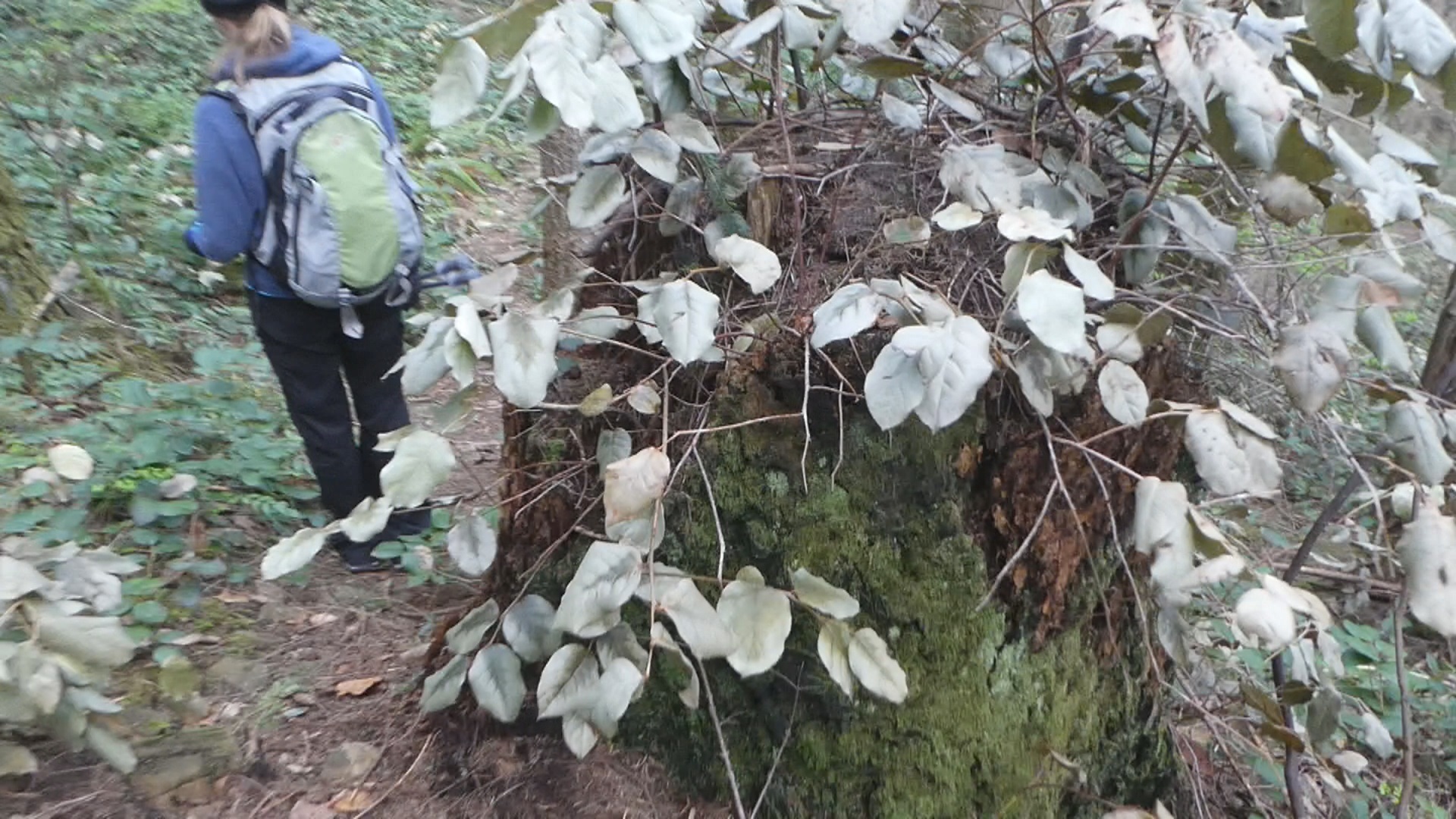VANCOUVER ISLAND, B.C. – Salal plants continue to die off on Vancouver Island.
Go Hiking Vancouver Island founder Catherine Temple sounded the alarm last month. During her hikes, she said she came across salal plants dying across the island and Sunshine Coast.
“This isn’t a small thing,” she said in early May.
“This is happening from Port Renfrew right up to Port Hardy, as well as I’ve heard from people on Salt Spring Island, in from Powell River, from Washington State, Quadra Island… it’s everywhere.”
On Friday, Temple offered an update.
She has seen salal return in pockets, but at the same time, she is also running across large swaths of white, dead plants.
“Some of it’s getting worse in the sense of the stuff that was pretty close to dying is pretty much dead now,” Temple said.
But there is also some good news as Temple said she has seen some new growth.
But with just a trace of rain through much of the region in June, she remains skeptical about a full-blown recovery on the island and Sunshine Coast.
“I’m a little bit trepidatious over it because there is no water and they’re not fully back yet, and who knows if they’re going to be,” she said.
Temple says she has come across dead salal on the Beaver Lodge lands, Menzies Mountain, the Campbell River Lookout Trail, Morton Lake, Cedar Lake and other hiking locations.
Identified by its shiny, dark green leaves, salal is the most common shrub in the B.C. coastal area.
The Sierra Group of B.C. notes that deer and elk eat the twigs and birds and other animals including bears eat the branches and berries.
Salal provides shelter for small animals and is a place of rest and bedding for elk and deer.
Richard Hamelin, a professor of forest pathology at UBC’s Faculty of Forestry, also expressed concern last month.
On Thursday, he said the plant is recovering – at least in some regions.
He theorized that salal started dying as a result of a combination of a cold snap this past winter and the recent drought.
But he said the plants look like they’re coming back on the mainland.
“Salal being very resilient, it looks like some of those bushes that looked dead are now sprouting again and getting a lot greener. Just from observation, it looks like it’s getting better,” he said.
Hamelin said there is “still brown everywhere,” signifying dead salal, but during a recent hike in Squamish, he saw salal sprouting “beautiful green leaves” without any rain.
“It’s looking like it probably was the cold,” he said.
“There was a debate in the communities. Some people were saying it was more the drought and (other) people were saying it was more the cold,” he said. “But I think the fact they are coming back and the rain hasn’t come yet, it kind of speaks to probably the cold damage.”




